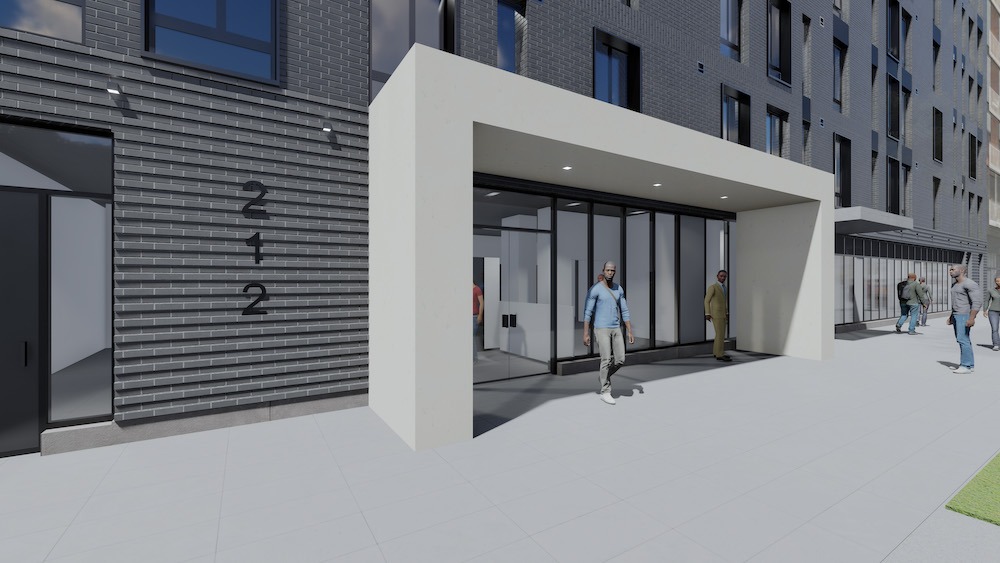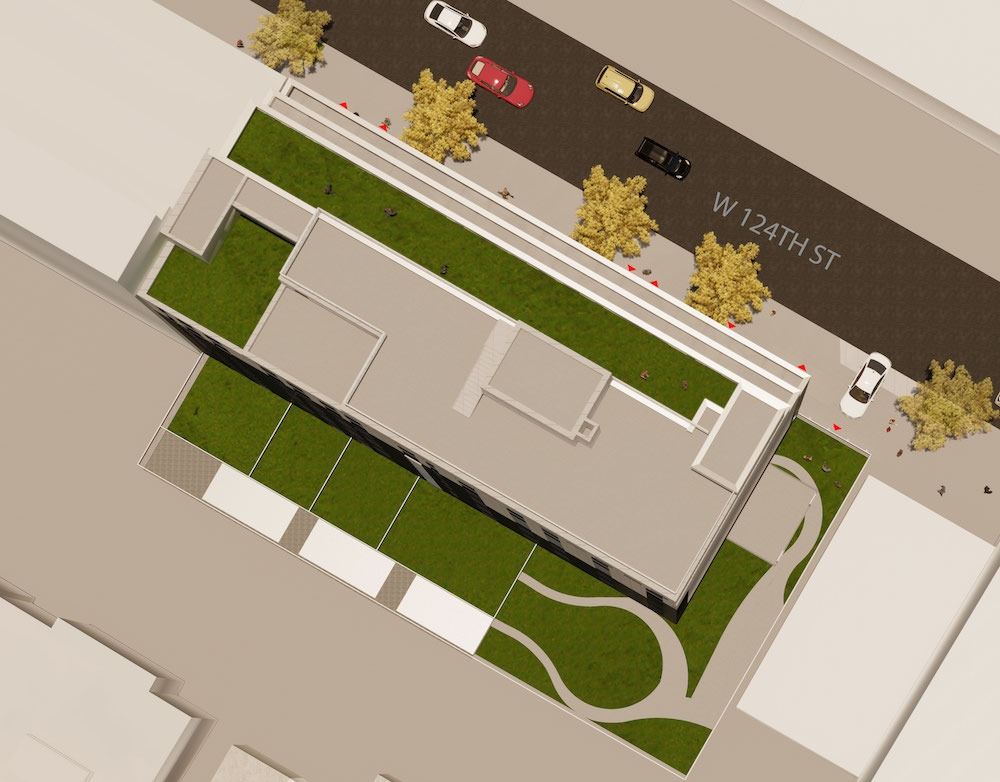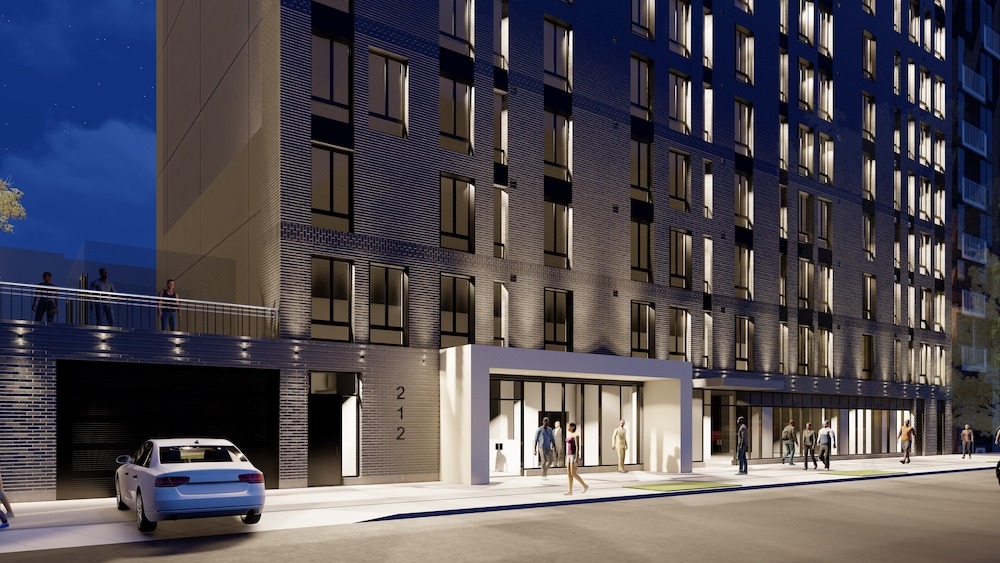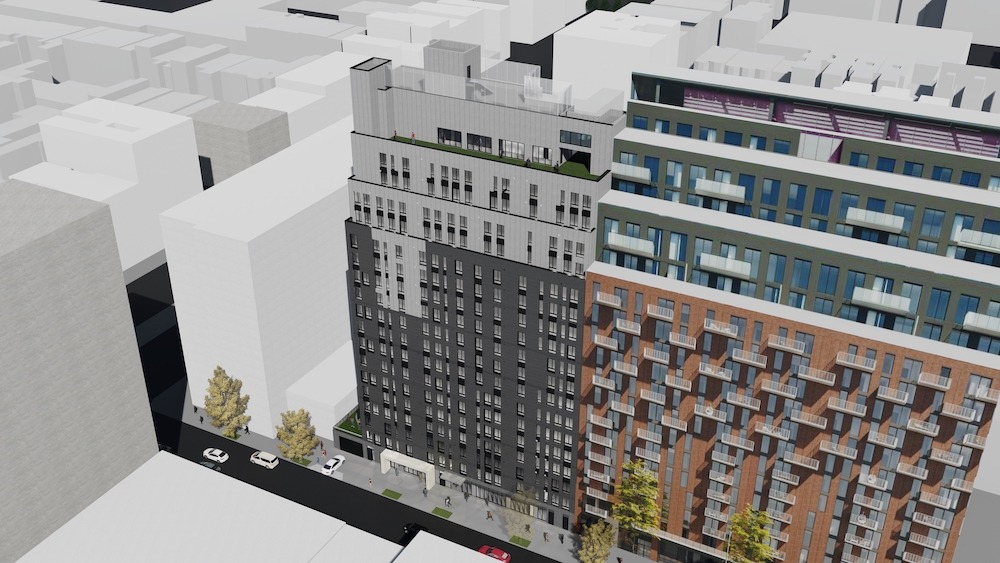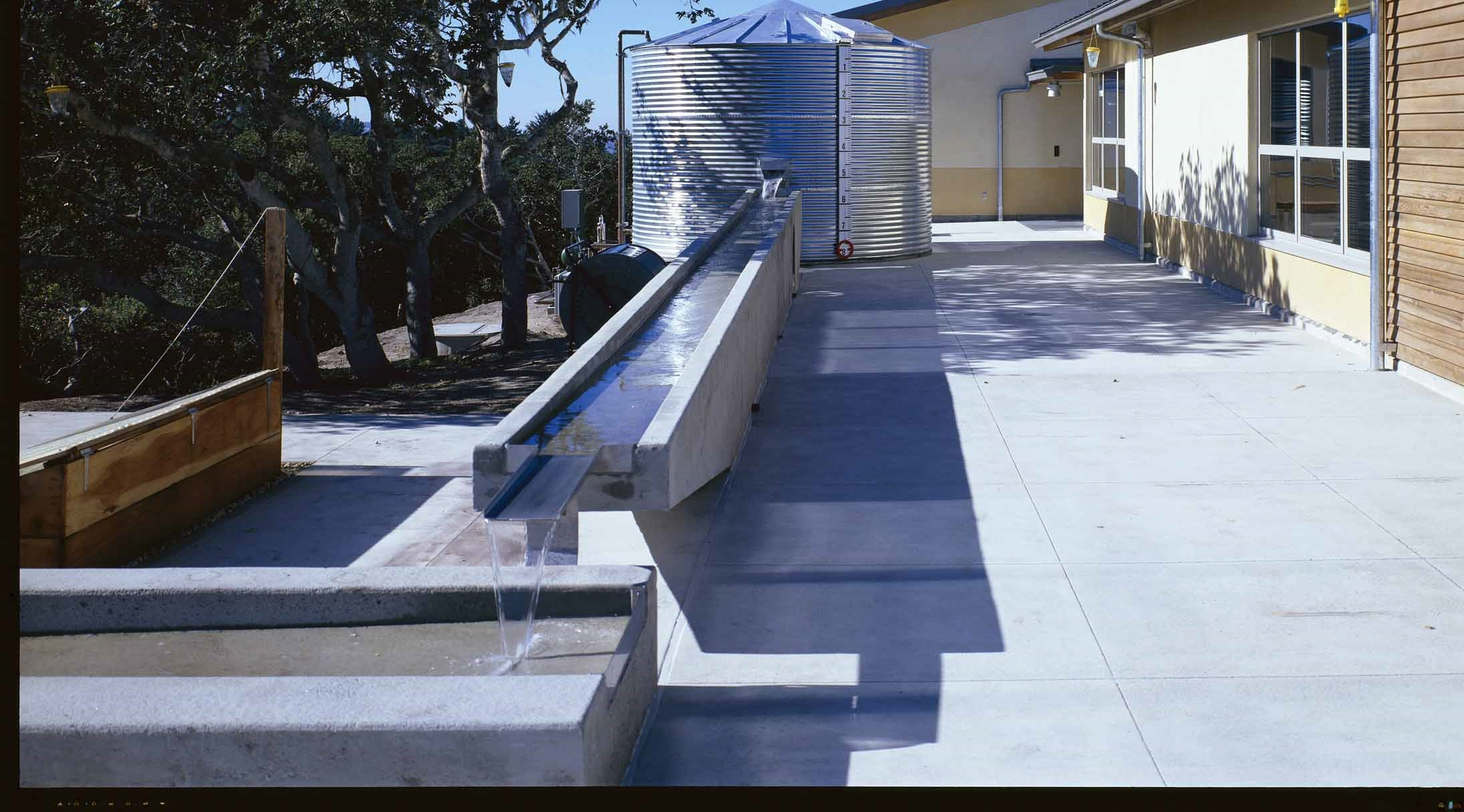Its construction stalled by the pandemic after groundbreaking in 2018, the Marcus Garvey Village in Harlem will regain momentum this month.
At 200 feet, with 19 stories and 169 affordable housing units, the building lies at a powerful intersection.
It’s on 124th Street between Adam Clayton Powell Boulevard and Frederick Douglas Boulevard. It’s also one block south and diagonally across from the Apollo Theater. Not far away is the Victoria Theater, and the Theresa Hotel, the site of a meeting between Fidel Castro and Malcolm X on Sept. 19, 1960.
Body Lawson Associates is the architecture firm that designed the Marcus Garvey Village; Carthage Real Estate Advisors is the client.
“They asked us to design and do the construction administration for the building,” says Victor Body-Lawson, principal in the firm. “The idea was to recognize the importance of the site and make a notable building for the residents, because the neighborhood is changing and gentrifying.”
As always, Body-Lawson’s goal is to design the best possible affordable housing and be a game-changer for the residents there on a day-to-day basis – and for future generations as well. If they’re lucky, he’ll add some of his abstract paintings to public spaces.
There’s garden and open space on the second level, and green space on top of the building. On the 19th floor are meeting space for community boards as well as auxiliary space. The local LGBTQ headquarters will be located on the ground level.
The base is set back 15 feet from the sidewalk, for a plaza-like feel upon approach. “We made the base glass for human scale, so on the street you feel the openness of the building, and the transparency inside is welcoming people,” he says.
Apartments are above the ground level, where a charcoal-colored brick cladding begins its climb up the exterior. “We chose a dark brick that essentially be grounded on the site, and contrasted the top with a lighter material,” he says. “The building looks grounded but as it rises, it looks lighter with the sky.”
The architect created a setback at the second level to give the feel of a smaller building. “The idea is that when you’re in a neighboring tall building and see this one, it’s related to the scale of the city,” he says. “But when you’re at the pedestrian level, it doesn’t feel that big.”
Next door is a building similar in scale, created for apartments and condominiums priced at market rates. Where it has balconies, the new structure will have floor-to-ceiling windows. “You’ll feel like you’re outdoors when you’re in your apartment,” he says.
The basement and foundation were completed after its groundbreaking; the next phase, beginning this month, will complete the superstructure.
Completion is slated for December, 2024.
For more, go here.

